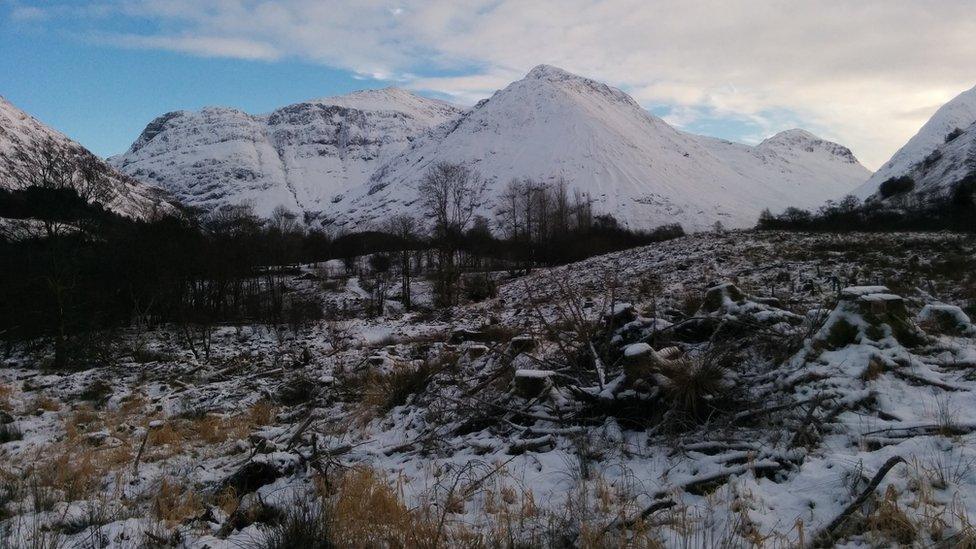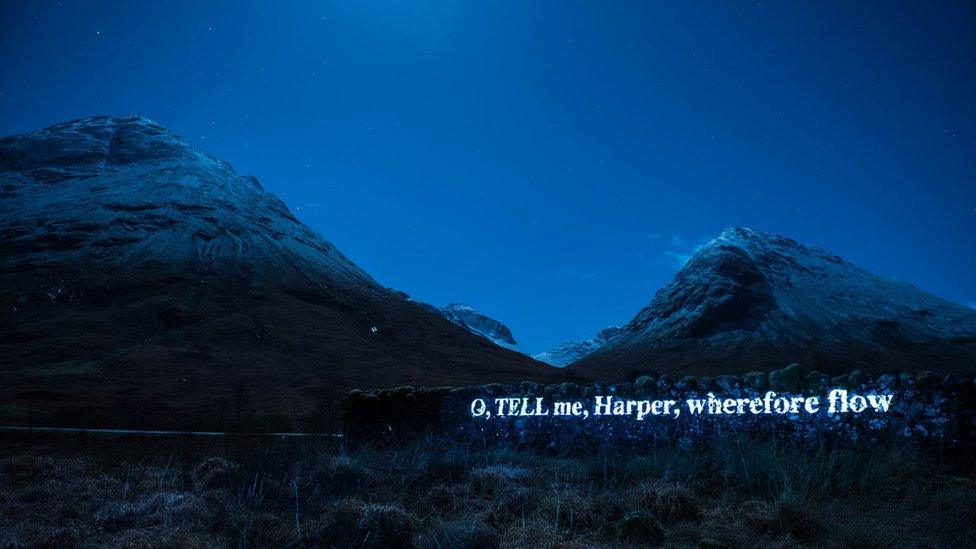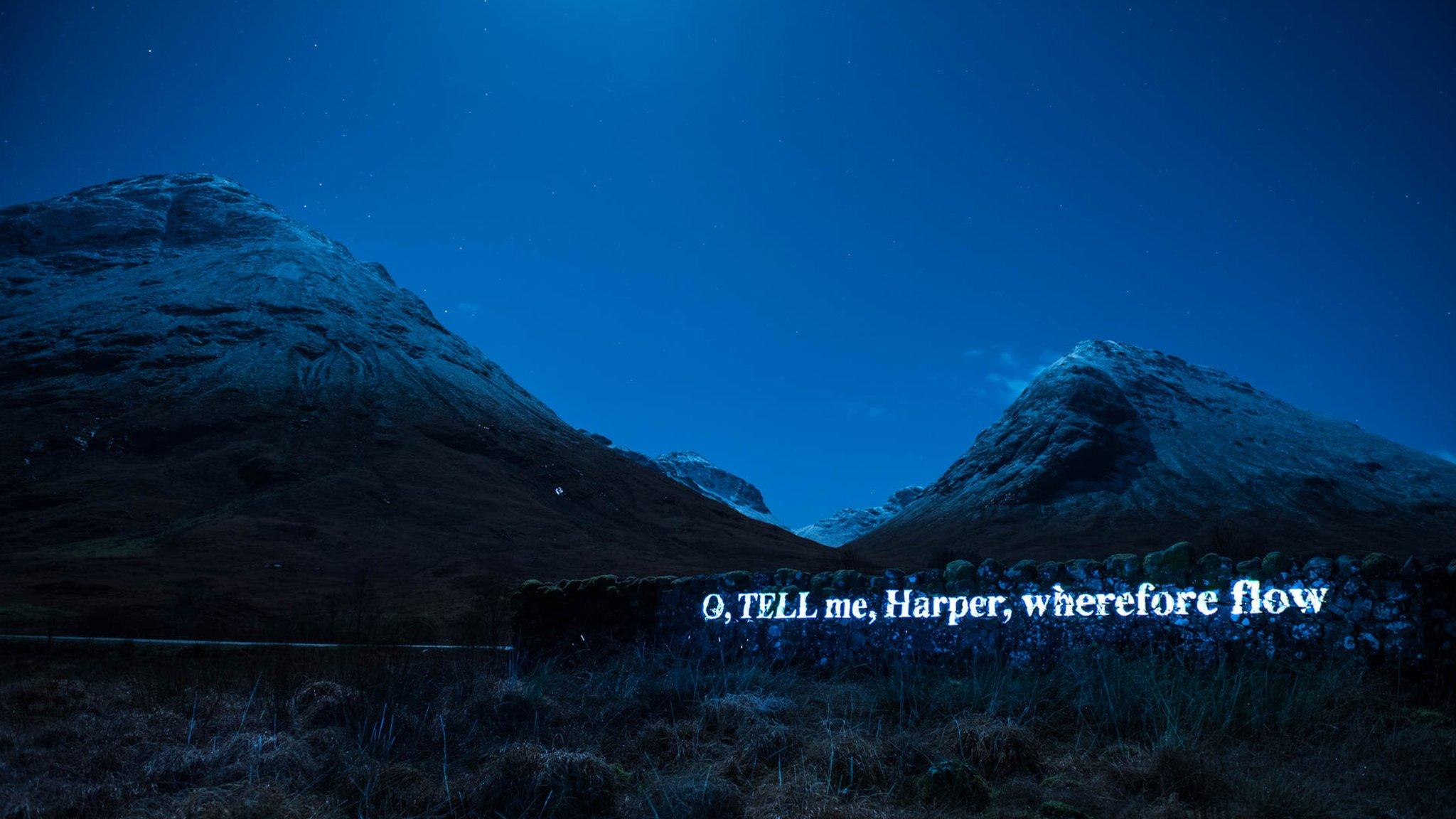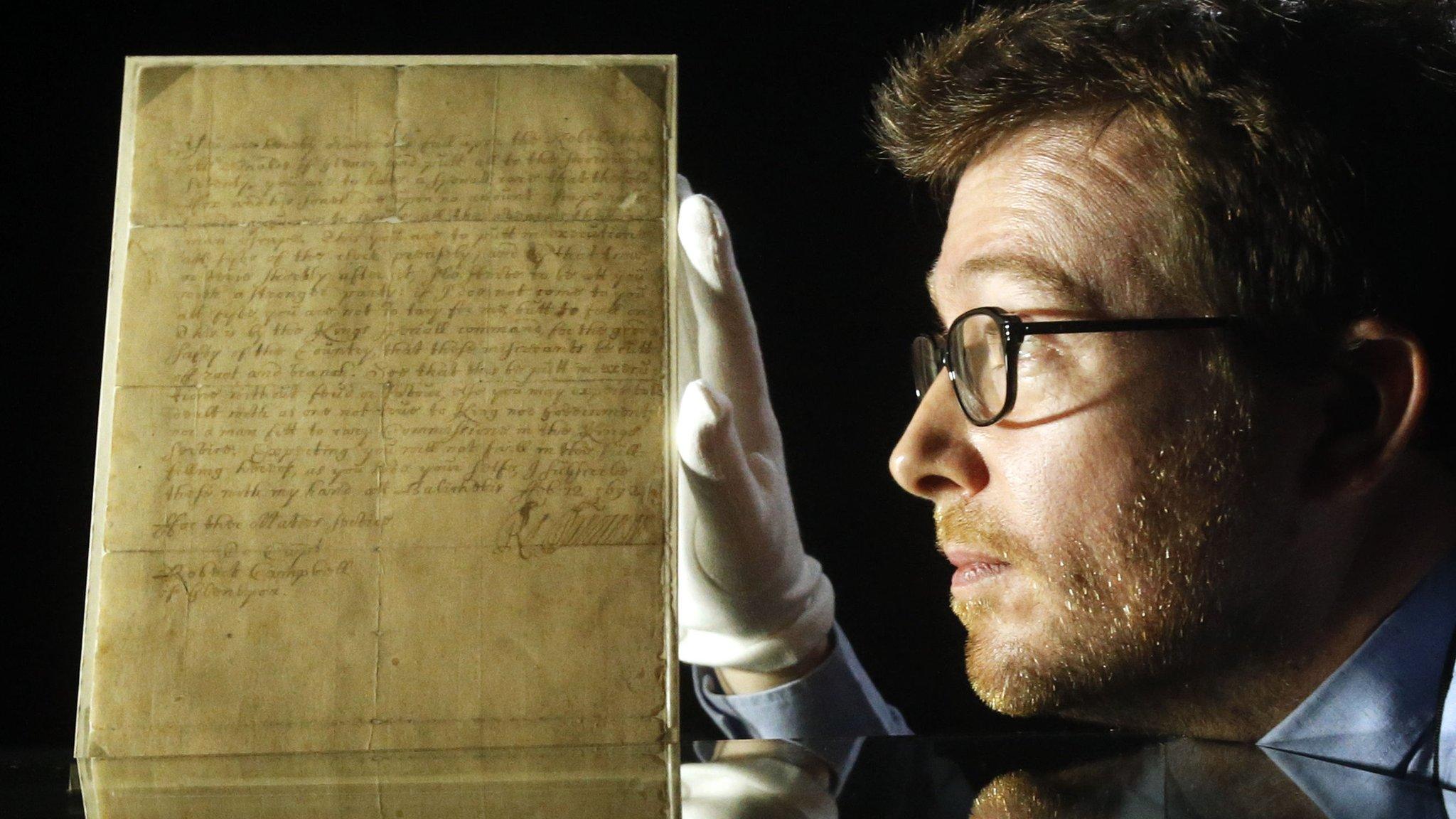New-found ruin could be linked to Massacre of Glencoe
- Published

The site in Glen Coe where the turf building was found
Archaeologists are to investigate the remains of a turf house building that they believe could have a connection to the Massacre of Glencoe.
The ruin was recently discovered at Achtriochtan, one of the places where some of the 38 murdered members of the MacDonald clan lived.
The killings in Glen Coe in February 1692 were carried out on the orders of the government.
A National Trust for Scotland team will visit the site next week.
The discovery was made during a routine inspection of known archaeological sites in the area by trust staff.
Little of the building survives, but the workers were able to see the rough rectangular outline of it.
'Future research'
The trust's head of archaeology Derek Alexander said: "We were very excited to discover these remains.
"Most of the archaeological sites in the glen are stone-built structures, likely to date to after the agricultural changes of the mid 18th or 19th Century.
"Prior to then, most buildings would have been built of turf, perhaps with one or two stones included in the base of the wall."

Lines from a poem about the massacre written by Sir Walter Scott were beamed on to Glen Coe's landscape last year
Mr Alexander added: "It is impossible to provide a precise date for the Achtriochtan structure from their surface remains alone, but by carrying out a detailed drawing of the site and undertaking a comprehensive photographic record we will provide a basis for any future research."
The members of the MacDonald clan were killed on 13 February by a detachment of government soldiers led by Capt Robert Campbell of Glen Lyon.
The events played a part in mobilising popular support across the Highlands for the Jacobite cause in the years leading to the 1715 uprising.
Years later, Sir Walter Scott wrote a poem about the events of 1692.
In February last year, lines from the poem were beamed on to the landscape of Glen Coe.
- Published5 February 2015

- Published11 December 2014
